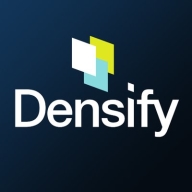

Densify and NetApp Cloud Volumes Service for Google Cloud compete in cloud solutions. Densify has an edge in pricing satisfaction, whereas NetApp Cloud Volumes Service stands out with a better feature set, potentially offering more value.
Features: Densify focuses on resource optimization, cost management, and enhancing cloud efficiency. NetApp Cloud Volumes Service specializes in robust data management, seamless integration with Google Cloud, advanced file services, and cross-region replication, providing a more comprehensive approach and versatile use cases.
Ease of Deployment and Customer Service: Densify provides straightforward deployment and strong customer support to aid in efficient cloud utilization. NetApp Cloud Volumes Service delivers seamless deployment processes, although initial configurations can be complex. It integrates closely with Google Cloud infrastructure, supported by extensive services ensuring continuity and operational efficiency.
Pricing and ROI: Densify offers a favorable cost structure with strong ROI through efficient cloud resource use. NetApp Cloud Volumes Service, despite higher potential setup costs, offsets this with enhanced capabilities and benefits for extensive data management needs, balancing upfront costs with long-term functionality.

Densify is a hybrid cloud and container resource management platform that makes workloads self-aware of their precise resource requirements and automates the resource management and selection process. This solution helps you control your cloud spend and also helps your apps perform and scale better. Densify enables you to match your cloud requirements with the optimal cloud supply. Additionally, Densify is the only technology that leverages patented, predictive machine learning-powered analytics to perform advanced modeling of workload patterns, and provide precise optimization directives. It is ideal for cloud engineers, container platform owners, and IT finance.
Densify works by:
Densify Features
Densify has many valuable key features. Some of the most useful ones include:
Densify Benefits
There are many benefits to implementing Densify. Some of the biggest advantages the solution offers include:
NetApp® Cloud Volumes for Google Cloud is a fully managed or self-managed file service that is integrated into Google Cloud with the multiprotocol support, performance, and availability required to run business-critical applications. It is designed to provide massively parallel shared access to thousands of Google Compute Engine and Google Kubernetes Engine instances, enabling your applications to achieve high levels of aggregate throughput and IOPS with consistent low latencies.
Use cases. Customers can use the service to migrate existing enterprise applications to Google Cloud. Other use cases include hybrid deployments, multicloud mobility, big data analytics, web serving and content management, application development and testing, media and entertainment workflows, database backups, container storage, and more.
Features. Multiple performance tiers, standard file interfaces, advanced data management, metered service, fully managed service, native service experience, integrated support, and integrated billing.
For more information:
NetApp: https://cloud.netapp.com/cloud-volumes-service-for-gcp
Google: https://cloud.google.com/netapp
We monitor all Cloud Migration reviews to prevent fraudulent reviews and keep review quality high. We do not post reviews by company employees or direct competitors. We validate each review for authenticity via cross-reference with LinkedIn, and personal follow-up with the reviewer when necessary.